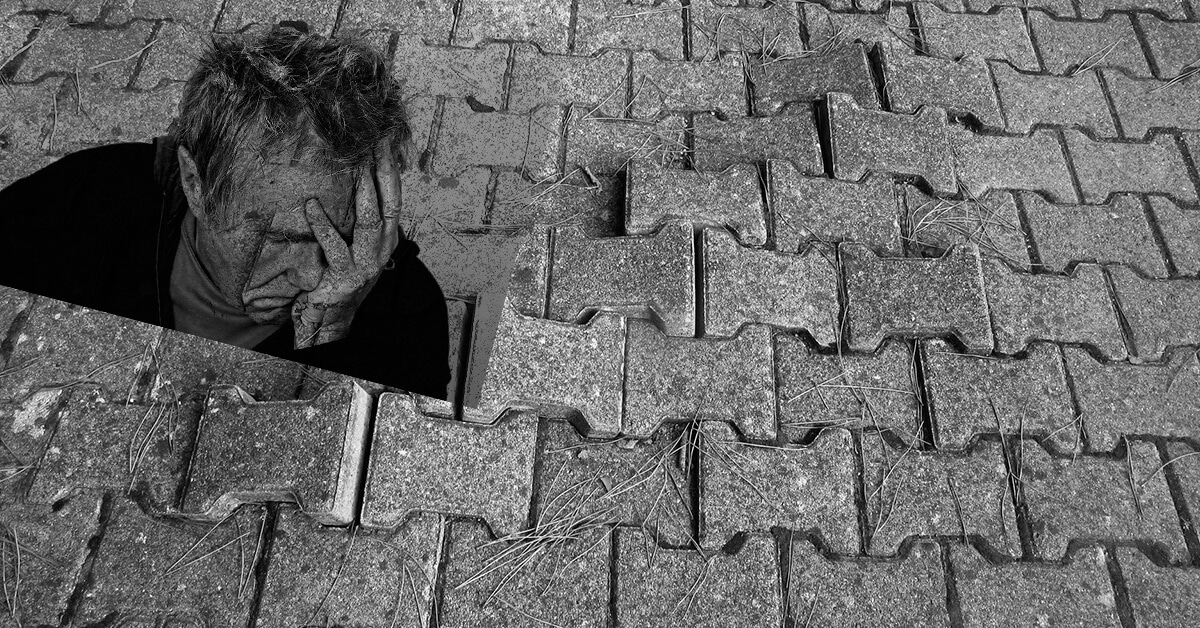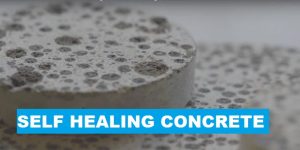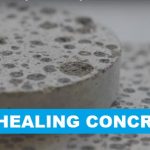It is this simple yet special interlocking behaviour that made this product so versatile in pavement application. The installation ICP does not require any additional mortar for the base, like how many other types concrete slabs and flags do. The same ease of installation also has made this tiny concrete pieces as material of choice for many starting from DIY homeowners up to large scale pavement contractors including town planners.
When installed properly as per specification, design, and guidelines; ICP can virtually be applied for any pavement job which usually will be done with wet concrete or asphalt. These tiny little pieces when connected together by interlocking them, it creates a huge carpet like pavement. It has the ability to transfer the load and stresses laterally between the adjacent units, distributing it over the large area.
Now the questions is, with so much of inherent greatness with interlocking concrete pavers; why are discussing about the problems with the ICP.
Majority of the problems with is ICP is associated with either the installation process or site related issues. Of course there one or two issues with the ICP, but these are more to the aesthetic issues.
1. Color Variation in ICP
Why this happen:
ICPs are typically made by combining cement, sand, aggregate, water, pigment in a pre-determined mix formulation. Theoretically, every concrete ICP that is batched from a mix ratio should give similar outcome in the end product.
However, you must first understand that these raw materials used are from natural sources. Therefore, it is almost impossible to make sure that the color of these material will remain constant all the time. Normally, in the production plants, these raw materials are procured in stages. For example, the sand delivered in day-1 of the month can never be the same as the material delivered on 5th day of the month. This is just one example why there could be slight color shading in the final product.
You may ask; if the material is not consistent, then how about the quality. The engineering qualities of the ICP are not influenced by the color of the raw materials. These raw materials will only display slight color differences, but their chemical and engineering properties are not altered. Therefore, concrete products produced with these raw materials will not affect the mechanical behaviour of the ICPs.
How to avoid:
As mentioned earlier, it is almost impossible to make sure that the colors of the raw material to remain constant forever. Therefore, it is only logical to plan some cautionary measures to minimize the effect.
Firstly, start with the source of the cement supply. Check with your regular cement supplier and make sure the cement for your production line is delivered from the same source. You got to educate your supplier to alert you if there are any major changes in their raw material source in producing the cement (eg. the limestone/clinker source).
Secondly, the customers should be advised to order the complete quantity for a particular project. In doing so, the production can be planned to produce all the product for that particular project site from possibly single source material. This also could minimize the impact of color toning on the pavement at site.
What to do:
Let say, you overlooked both the advice given on avoiding this issue; what’s next? If the product delivered to the site has obvious color variance; then the laying should be stopped, and the manufacturer should be contacted to discuss on the possible solution.
The best cost-effective solution would be to make some adjustment to the layout design of the pavement. The ICPs should be mixed and laid in random patterns; thus, giving a differently unique look.
The next option is not guaranteed to solve the issue, but still can be an option. Try to get the manufacturer to replace the ICP with similar colors. Like mentioned earlier it is almost impossible to make exact colored pavers.
Whatever you choose to do, Never use acid or any chemical to wash the paver to even out the colors.
2. Loss of Interlocking Action Between ICPs
Why this happen:
Efflorescence is a by-product resulting from chemical reaction during an on-going hydration process of cement. The theory and fundamental of occurrence and formation of efflorescence is topic by itself to be discussed.
>> Check this article on efflorescence to understand the process better.
These are quite common symptom on almost all kind of concrete products. However, in general concrete products, this is not a critical issue. However, when it comes to aesthetic product like ICP or concrete tiles; then this is a big issue.
Most of the time the customers and/or end user will not be happy with this, and it is quite difficult to convince them that this will go off naturally over-time. Because the problem is we can tell them exactly how long it will take for it to go off. Typically, it takes anywhere from 6 months to 12 months, but it is not a guarantee.
What we can guarantee is that; this will never affect the structural integrity and durability of the ICPs.
How to avoid:
First method is of course to let mother nature to take its own course. Once the pavement is exposed to running surface water (like rain) plus with the regular abrasion due to human traffic or vehicular traffic; the efflorescence is expected to fade away. However, the problem is we don’t know exactly how long it takes for this process to completely remove the effect.
Alternatively, you can introduce mechanical intervene to try to remove the efflorescence as much as possibly can. If it is primary efflorescence, then you can try with just the water jet in the hope that it would dilute and wash away together with the running water.
If it already late primary efflorescence or secondary efflorescence; then try washing it with diluted acid based solutions. Pour this solution over the intended surface and leave it to soak in for about 3 to 5 minutes, then scrub it off as continue to pour water to wash it away.
A noteworthy point is that, when you use any acidic solution on concrete surface especially on ICP, it may affect the surface appearance of the pavement. You may notice some color fading or in some case the surface may appear to be rougher/porous.
What to do:
First option would be to seal the surface of the ICP with water-repellent. Theoretically, for efflorescence to appear on the surface it must in contact with water from external source as well. As this water penetrates the ICP through the pores it brings out the efflorescence to the surface. So, the idea behind the use of water repellent is that it would block the moisture movement on the surface of the paver. This is expected to minimize the formation of efflorescence.
The efflorescence also can be minimized by having better control starting from the production floor to the storage yard, and eventually at site. The newly produced ICP shall be kept under well ventilated and aired area and avoid any direct exposure to the extreme weather. And once at the site, it should be stored in the same manner till ready to be laid.
This all are just precautionary steps to minimize the effect of efflorescence and not to eliminate it. Many chemical companies claims that they have found the magic solution/treatment for efflorescence; but I haven’t come across one yet.
3. Deep Scratches and Cement Stain on ICP Surface
Why this happen:
This is usually due to the poor site management. This happens when you start laying the ICP while the other part critical construction is on-going. What do I mean by critical activity? One good example is the activities that still require cranes to move in and out of construction site on regular basis.
Sometimes the cranes could be anchored directly on the paver surface without providing any damping plates. Another classic example is the movement of waste collection throughout the site by dragging it around.
The cement stains are usually due to spillage and splashes during the plastering work on external wall and facades.
How to avoid:
The site personnel must be well briefed and educated on do’s and don’ts with interlocking concrete pavers. Possibly try to delay the laying of the ICP towards the end of project.
What to do:
At this stage nothing much can be done other than just replacing the pavers. But the good news is with ICP, you only remove and replace the damaged pavers. It is just like removing a piece from puzzle and putting a new one.
4. Breakages of ICP Due to Base Settlement
Why this happen:
For any type pavement to perform as per intended design, all the layers underneath must be well constructed. Therefore, it is utmost important the base and sub-base of the pavement is adequately designed and constructed.
Like I mention earlier, the interlocking behaviour of ICP makes it to work like a grid system; and the stresses from external applied loads (from vehicular traffic) can only be distributed effective if the base is stable.
If there is any undesired settlement of the sub-base, the ICP on it will also sink along. This would create an uneven surface and the pavement will lose its connectivity; thus, unable to absorb and dissipate loads evenly throughout the paved area. The depressed ICP will have to absorb higher load, and will eventually causes damages to the corners.
How to avoid:
It is quite easy to avoid this from happening; just make sure the base is designed and prepared according to the national code of practice and/or specification.
Never underestimate the condition of soil by just looking at the surface; make it a practice to conduct/request a proper soil investigation to determine the type of soil underneath the ICP. This helps in determining the degree of compaction needed to stabilise the sub-base.
Though ICP does not require heavy maintenance like asphalt pavement; it is advisable to just monitor the sensitive area for potential settlement.
What to do:
If you get a complaint about the settlement; the first thing you should do is stop arguing with the client. Just assure them this is easily rectifiable and provide them with solution to make it good again. First isolate the affected area, and remove the ICP from the affected area.
Re-fill that point with new crusher-run base material (make sure the old one is removed and loosened out) and re-compact. Re-install the ICP (replace the broken/damaged ones with new units). Compact the pavement, and fill the gaps with proper joint filling sand (and re-compact till the gaps are all filled-up with the filling sand).










